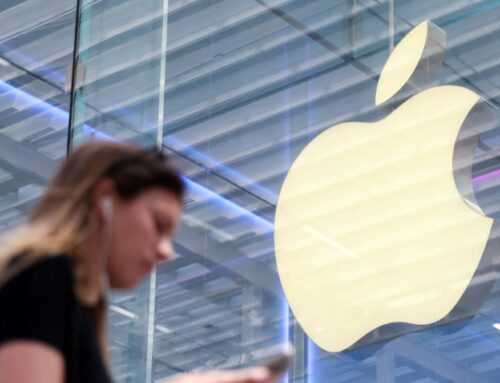Is it time to invest in value stocks?
May 10, 2025
Is it time to invest in value stocks?
Trump’s tariffs and new trade deals could turn the tide in favour of an unloved share type, writes Ali Hussain
Sunday May 11 2025, 12.00am, The Sunday Times
A sea change is underway in the global investment landscape. The enduring principles of value investing, long championed by the Sage of Omaha, Warren Buffett, are seeing a resurgence. That means unloved markets such as the UK are back in favour.
The shift comes as America’s tariffs have turned the fortunes of some of the world’s largest companies, with new trade deals fostering a changed world order. Last week the UK struck fresh deals with India and America, making the British market increasingly attractive to investors looking for a bargain.
Buffett, who is about to step down as head of his investment company, Berkshire Hathaway, is the world’s most famous “value” investor. His investing style involves seeking out companies that are considered cheap compared with their long-term potential. But it has fallen out of favour since the 2007-09 financial crisis, and the market has been dominated by “growth” oriented firms, often trading at higher prices relative to their earnings (such as Apple, Amazon and Microsoft). Could the tide be turning?
This is a strategy of identifying stocks that are trading below their intrinsic value, or true worth, often because they are out of favour or overlooked by other investors. The goal is to profit when the market eventually recognises their true value.
Russ Mould from the investment platform AJ Bell said: “The idea is to buy stocks that investors will want to purchase, but just don’t know it yet, often because the current outlook is so bleak.”
The danger with this approach is picking a firm that does not bounce back in the future, perhaps because its business model is broken, because of competition, customer dissatisfaction, obsolescence, or regulation. This is known as a “value trap”, where something looks undervalued but is actually cheap for good reason.
This style of investing involves finding companies with strong potential for earnings growth. Investors who favour this approach typically choose firms that are expected to expand rapidly rather than provide an income by paying dividends. Growth companies tend to reinvest profits back into the business to fuel future growth, rather than pay dividends to shareholders.
The downside is that they are more susceptible to economic uncertainty. Mould said: “The danger is that growth misses expectations, with the result that the share price collapses — the lofty valuations that price in that rapid future growth leave little or no protection against any disappointment.”
One recent example came with the outbreak of war in Ukraine in 2022, which triggered a huge stock market reaction. That year, the Morningstar US growth index of 25 of the largest American growth firms plunged 36.7 per cent, while its basket of 25 of the largest value stocks (including Berkshire Hathaway) fell just 0.72 per cent.
Growth stocks surged 38 per cent in 2023 and 23 per cent last year, according to Morningstar. By contrast value stocks lagged, rising by 12 per cent in 2023 and 13.8 per cent last year.
But this year, growth stocks are down about 3.5 per cent while value stocks have climbed 0.85 per cent.
Investors have spotted the shift and have started backing value-oriented markets such as the UK, which had been shunned. While the S&P 500 index of big US firms is down 3.5 per cent this year, the UK’s FTSE 100 is up about 3.6 per cent.
Susannah Streeter from the investment platform Hargreaves Lansdown said: “In recent years growth stocks have been the darlings of Wall Street. Their allure lies in their promise of rapid expansion. The Magnificent Seven (Apple, Microsoft, Amazon, the Google-owner Alphabet, Meta, Nvidia, and Tesla) are the most famous growth players, but most have seen sharp falls this year amid concerns about the impact of Donald Trump’s tariffs and the competition emerging in the AI revolution.”
• Top investment strategies for DIY investors
Investors are reviewing their investment approach. Joe French, 52, from Clayton-le-Moors in Lancashire, used to allocate 70-80 per cent of any new investment into US shares. Now it is more like 30-40 per cent.
French, who runs a security products business, said: “I have changed my approach since Trump’s intervention. America used to be the only show in town but now other markets look better value.”
He is investing more of his money in UK shares, which he says are “massively undervalued”, as well as European defence stocks. “While I would never completely dismiss America, I certainly think it is time to look elsewhere, at least for the next few years,” he said.
Growth stocks have, in general, been in favour since the global financial crisis of 2007-09, which led to a period of ultra-low interest rates as central banks tried to support economic growth. This led to a surge in borrowing and therefore in investment and asset prices, which favoured rapidly expanding firms. This appears to be shifting.
Andrew Oxlade from the wealth manager Fidelity International said: “Part of this story is the post-pandemic economic recovery, which has at various points shifted focus to undervalued sectors poised for rebound.
“The volatility of tariffs has also increased the appeal of value over growth — better to buy companies with high earnings today rather than based on some uncertain future potential.”
Whether the shift lasts depends in large part on central banks, said Jason Hollands from the wealth manager Evelyn Partners: “Growth stocks typically thrive when interest rates are falling. So if the Federal Reserve speeds up rate cuts to avert a recession, this could prove a tailwind to growth stocks. But there is also a possibility that Trump’s policies stoke inflation, which could mean rates stay higher for longer.”
On Thursday the Bank of England cut interest rates to 4.25 per cent, while on Wednesday America’s Federal Reserve kept rates on hold.
The FTSE 100 can be considered a value option, given that it is dominated by large, established companies, many in unloved sectors such as banking and energy.
An easy and cheap way to benefit from any uptick in the UK market is to invest in a tracker fund that follows its performance. The iShares FTSE 100 exchange traded fund is one of cheapest, charging 0.07 per cent.
For those who prefer to invest through an active fund, where an expert cherry-picks the best stocks, Hollands suggested Artemis UK Select, which holds big names such as Barclays, Shell and Rolls-Royce. It charges 0.8 per cent. The fund has returned 15.7 per cent over a year, compared with its sector average of 5.4 per cent.
Alternatively, the Fidelity Special Situations fund focuses explicitly on value stocks. Its top holdings include British American Tobacco, NatWest and National Grid. It is up 13.7 per cent over a year.
But the UK is not the only market poised to benefit from a value revival, so consider a global fund, Mould said. Schroder Global Recovery has 34 per cent of is portfolio in the US stocks, including Molson Coors Beverage Company and Verizon Communications, as well as investments in the UK, Germany, China and Japan. It has returned 2.4 per cent over a year, and charges 0.94 per cent.
• How to invest £1000 in 2025 – Times Money Mentor
While value stocks’ outperformance has been over a short time, Lindsay James from the wealth manager Quilter said the long-term data is more convincing: “On a cumulative basis, value investing outperformed growth strategies between 1975 (when the indices were created) until 2020. Only since then has ‘growth’ dominated.”
Rather than try to correctly call a big shift in the best investment style, it may be better to take a more balanced approach, incorporating both styles into your portfolio, James said.
One fund that employs both is Fidelity Asia Pacific Opportunities, which has 23 per cent of its portfolio in Chinese equities and 16 per cent in Australian shares. Top holdings include the Hong Kong insurance group AIA and the India-based bank HDFC. The fund is down 2.5 per cent over a year compared with a 1.6 per cent rise for its sector. It charges 0.9 per cent.
Another option is AllianceBernstein European Growth Portfolio/Europe ex UK Equity Growth, which invests in stocks across Switzerland, Germany and Denmark, among other countries. Top holdings include the pharma giant Novo Nordisk and the luxury goods firm LVMH. The fund is down 5.8 per cent over a year compared with a sector average rise of 4.1 per cent, and charges 0.8 per cent.
Are you changing what you’re investing in? Let us know in the comments below
How to stop your darling children wrecking your finances
I’m the director of a firm I’ve never heard of, in a town I’ve never been to
Search
RECENT PRESS RELEASES
Related Post










